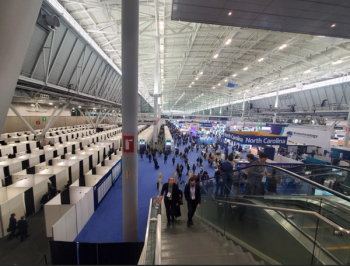
- BioPharm International-06-01-2005
- Volume 18
- Issue 6
Final Word: NIH-Biopharm Interactions and the New NIH Conflict-of-Interest Regulations
. . . These new stringent rules will strongly impact the pipeline of scientific talent the NIH has provided the biopharm industry.
The National Institutes of Health (NIH) and the biopharm industry have had a long and productive relationship, resulting in the development of new drugs and improved health care of the American public. The format by which the interactions has occurred has been multifold: material transfer agreements (MTAs), cooperative research and development agreements (CRADAs), industry scientists visiting and working at NIH labs, company sponsorship of NIH fellows, and industry scientists and NIH scientists participating together at meetings and conferences. The NIH-biopharm partnerships also have included NIH scientists serving on industry scientific advisory boards and as industry consultants.
These latter relationships became possible during the tenure of former NIH Director Harold Varmus, when new guidelines permitted such interaction and allowed compensation for such service — if performed as an approved outside activity — that was not limited in the type or amount of compensation. NIH employees were required to perform these services only during annual leave or outside of normal working hours. Less than 500 of the 18,000+ employees engaged in these types of activities, and their involvement was only possible if it called upon general scientific expertise that was unrelated to their specific projects that were ongoing in their NIH laboratories.
This arrangement has now changed, due to a 2004 congressional investigation that discovered some NIH employees received significant compensation for consulting activities that NIH had not approved. While there is no evidence these unapproved consulting activities resulted in any patient harm or stock price manipulation, Department of Health and Human Services (DHHS) officials, reacting to congressional calls for tighter regulations, issued stringent new ethics rules in February 2005 for NIH employees. These new rules — made effective without any period for comment before implementation — banned all outside consulting, imposed strict limits on employee ownership of stock in the biotech and pharma industry, restricted interactions with numerous non-profit organizations, and banned many awards to NIH employees if valued in excess of $200. While DHHS accepted comments on the new rules for 60 days, along with a promise to review the rules based on the comments after one year, it is not at all clear that any changes to the rules will occur. This despite the call for reevaluation of the new rules by many professional scientific organizations as well as Senators Spector (PA) and Harkin (IA) and Congressmen Van Hollen (MD) and Davis (VA).
In response to the new rules, the steering committee of an organization of NIH scientists, the Assembly of Scientists (AOS), has drafted alternative proposals for maintaining and increasing the scientific integrity of the NIH while providing a more realistic application of the rules. In addition, the steering committee has retained a DC law firm and has kept open the possibility of legal action.
Many organizations and most intramural NIH scientists believe that if the new rules become final, they will seriously damage NIH's ability to maintain its premier reputation for scientific excellence by curtailing its ability to recruit and retain scientists of the highest caliber. And yet, the biopharm industry has been unusually quiet about this issue and appears to be standing on the sidelines watching events unfold. This despite the fact that many leaders and staff scientists in the biopharm industry have spent part of their careers at NIH, either as postdoctoral fellows, staff scientists/clinicians, principal investigators or lab/branch chiefs.
So should the biopharm industry even care about the new regulations? While it is true that MTAs, CRADAs, and even consulting without compensation are still possible (the latter only if it offers a benefit to the US government), it is my belief these new stringent rules will strongly impact the pipeline of scientific talent the NIH has provided the biopharm industry. This impact may not be seen for a few years and may even have an immediate, but short-term, positive impact as scientists leave NIH to enter industry. The long-term impact is more onerous — if the scientific excellence of the NIH begins to decline, the talent available to industry from the NIH will also decline. Small biotechs and big pharma will no longer have the same pool of scientists with the broad depth of research experience provided by the NIH, and their ability to compete on the worldwide level will gradually decline.
It is time for scientists in the biopharm industry to speak up and let their elected representatives and the DHHS administration know that while strong ethics rules that maintain the scientific integrity and excellence at the NIH are important and necessary, the rules now in place go far above what is needed to achieve this goal. Saying and doing nothing does little to serve the NIH and American biomedical research.
Howard A. Young, Ph.D., Principal Investigator, Laboratory of Experimental Immunology, Center for Cancer Research, National Cancer Institute , Chandler Street Bldg. 560/31-23 Frederick, MD 21702-1201 Tel: 301-846-5700, Fax: 301-846-1673, Email:
Howard Young, Ph.D., is an elected member of the steering committee of the NIH Assembly of Scientists. His comments are based on his personal opinions and do not represent the views of the NIH or the US government. From 2002 to 2004 he served, with appropriate permission from the NIH, on the Scientific Advisory Board of Advanced Viral Research, Inc. (AVR) and received stock options for his service. He exercised none of these options, and he resigned from the AVR Board due to the new NIH ethics rules. To see a full list of AOS committee members and to review Young’s chronicles of AOS activities, along with the responses to the rules sent to DHHS by a number of professional scientific organizations, visit: http://
Articles in this issue
over 20 years ago
StreetTalk: Send Lawyers, Guns, and Money: My Patent Has Hit The Fanover 20 years ago
The Susceptibility of CAPA to Subjective Biasover 20 years ago
Book Review: Inside the FDAover 20 years ago
Centralizing Compliance for Competitive Advantageover 20 years ago
Chromatographic Purification of MAbs with Non-Affinity Supportsover 20 years ago
The Art and Process of Successful In-LicensingNewsletter
Stay at the forefront of biopharmaceutical innovation—subscribe to BioPharm International for expert insights on drug development, manufacturing, compliance, and more.




